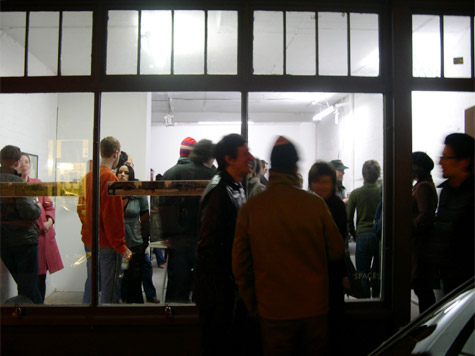 |
Whitechapel Project Space, London |
|
The exhibition at Whitechapel Project
Space concludes the six-month process of exchanges. It brings
together the artists? research as well as functions in itself as
another element of it, another shared moment of experimentation
and reflection. The main challenge the artists have faced in the
project is how to make contact with a foreign city on a brief visit:
how can one reach beyond the city?s façade, what do the known
landmarks and other expectations allow one to discover, and how
do the similarities and differences to one?s home city direct these
engagements. The exhibition now draws attention
to the blurry boundary negotiated by these investigations between
the specificity of the cities and more general urban concerns. The
artists have followed different paths and methods, developing from
observation and collection to translation and intervention. The
many slight and often indefinable differences encountered between
the two cities made apparent the problems of comparison as well
as unsettled the accustomed significations in both. The works based
on this research map out a number of points of contact available
for a visitor in a city. They suggest possibilities for closer engagement
with the city and its inhabitants, and reflect both the desires
and difficulties to attain this. Monuments seem to resist change
yet simultaneously appear as potential gates for time travel through
the cities? layers of history (Abigail?s books). They also offer
themselves and their symbolic charge for various readings e.g. through
personal mapping and remodelling (Chris? works). Buildings stand
as shields, impenetrable even in their contemporary transparency
(Anu?s video), while in a subtle gesture they can be seen as surfaces
available for individual expressions that may disrupt the flow of
impersonal signs in the public sphere (Simo?s stencil drawings).
Erasing text draws attention to the variations in visual messaging
in the different cities (Irit & Isaac?s Metro-papers). Public
spaces appear as routes of journeys and as stages for narratives
(Irit and Isaac?s panoramas), where the routines and fixed coordinates
may also be ruptured by sudden indecisiveness (Minna?s videos). The question finally raised and not entirely solved is how the six-month process ? the many productive interactions as well as the limitations encountered ? can be made tangible in the exhibition, which aims to present modes of working never simply captured in the so-called end products. |




